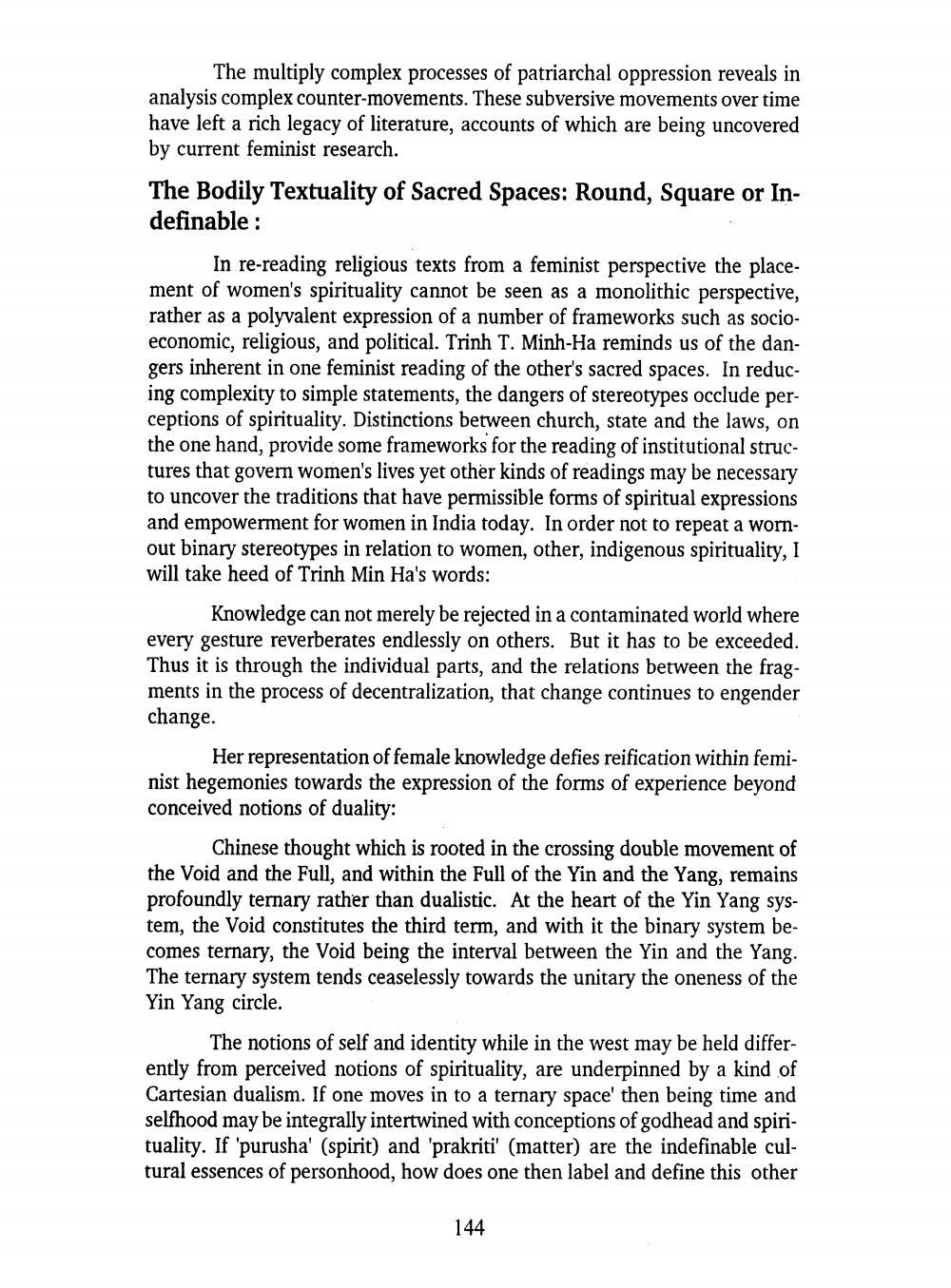________________
The multiply complex processes of patriarchal oppression reveals in analysis complex counter-movements. These subversive movements over time have left a rich legacy of literature, accounts of which are being uncovered by current feminist research.
The Bodily Textuality of Sacred Spaces: Round, Square or Indefinable:
In re-reading religious texts from a feminist perspective the placement of women's spirituality cannot be seen as a monolithic perspective, rather as a polyvalent expression of a number of frameworks such as socioeconomic, religious, and political. Trinh T. Minh-Ha reminds us of the dangers inherent in one feminist reading of the other's sacred spaces. In reducing complexity to simple statements, the dangers of stereotypes occlude perceptions of spirituality. Distinctions between church, state and the laws, on the one hand, provide some frameworks for the reading of institutional structures that govern women's lives yet other kinds of readings may be necessary to uncover the traditions that have permissible forms of spiritual expressions and empowerment for women in India today. In order not to repeat a wornout binary stereotypes in relation to women, other, indigenous spirituality, I will take heed of Trinh Min Ha's words:
Knowledge can not merely be rejected in a contaminated world where every gesture reverberates endlessly on others. But it has to be exceeded. Thus it is through the individual parts, and the relations between the fragments in the process of decentralization, that change continues to engender change.
Her representation of female knowledge defies reification within feminist hegemonies towards the expression of the forms of experience beyond conceived notions of duality:
Chinese thought which is rooted in the crossing double movement of the Void and the Full, and within the Full of the Yin and the Yang, remains profoundly ternary rather than dualistic. At the heart of the Yin Yang system, the Void constitutes the third term, and with it the binary system becomes ternary, the Void being the interval between the Yin and the Yang. The ternary system tends ceaselessly towards the unitary the oneness of the Yin Yang circle.
The notions of self and identity while in the west may be held differently from perceived notions of spirituality, are underpinned by a kind of Cartesian dualism. If one moves in to a ternary space' then being time and selfhood may be integrally intertwined with conceptions of godhead and spirituality. If 'purusha' (spirit) and 'prakriti' (matter) are the indefinable cultural essences of personhood, how does one then label and define this other
144




